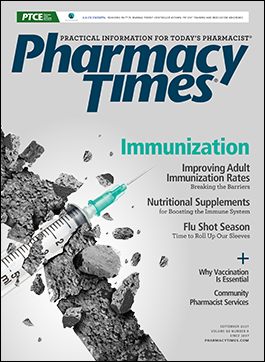Publication
Article
Pharmacy Times
Potential Medication Errors With Basal Insulin/ GLP-1 Fixed Combinations
Author(s):
Two fixed-ratio combination insulin/glucagon-like peptide-1 receptor agonists have been approved by the FDA.
Two fixed-ratio combination insulin/glucagon-like peptide-1 (GLP-1) receptor agonists have been approved by the FDA. They each combine a basal insulin with a GLP-1 agonist and are administered once daily. SOLIQUA 100/33, a Sanofi product, provides 100 units of insulin glargine per mL and 33 mcg of lixisenatide per mL in a 3-mL single-patient-use pen. Novo Nordisk’s XULTOPHY 100/3.6 provides 100 units of insulin degludec per mL and 3.6 mg of liraglutide per mL, also in a 3-mL single-patient-use pen. Soliqua 100/33 and Xultophy 100/3.6 differ from other insulin-containing products and present new potential safety issues.
One potential safety issue is that practitioners may mistakenly think that these products contain only insulin. This is one reason why computer system drop-down lists and pharmacy communications about these products should use the ratio expressions (ie, Xultophy 100/3.6 and Soliqua 100/33), which may help to indicate to users that the products contain different ingredients. The ratio expression is designed to express the ratio of insulin to GLP-1 agonist per mL (eg, Soliqua 100/33 contains 100 units of insulin glargine and 33 mcg of lixisenatide per mL). In contrast to the ratios used for insulin-insulin combination products such as NOVOLOG MIX 70/30 (insulin aspart protamine, insulin aspart) or HUMALOG MIX 50/50 (insulin lispro protamine, insulin lispro), the ratio expressions for Soliqua 100/33 and Xultophy 100/3.6 do not sum up to 100%, which should also help practitioners differentiate them from insulin-only products.
If your system uses generic names, make sure both ingredients are displayed and not truncated. However, keep in mind that the first name practitioners will see is “insulin.” This may contribute to practitioners mistaking these as insulin-only products. Using the brand names, ideally with a hover-over presentation of the complete generic names, could reduce the risk of an error. Also, counsel patients when initiating Soliqua 100/33 and Xultophy 100/3.6 so they understand that the products contain both insulin and a GLP-1 agonist.
Dosing of these products is expressed based on the number of insulin units (the pen dials the dose in insulin units only). The package insert for each product has a table that indicates the amount of GLP-1 agonist per insulin unit, but including the GLP-1 agonist dose is not recommended when prescribing these products. If an order is communicated without the ratio expression (“Soliqua 40 units” or “Xultophy 35 units”), practitioners could think it is a new insulin product and not recognize that a GLP-1 agonist is contained within. This could lead someone to prescribe a separate GLP-1 agonist to go along with what is thought to be the patient’s insulin dose.
These products are not recommended for use in combination with any other product containing a GLP-1 agonist because of the risk of overdose. To help avoid this, consider testing your computer systems to see if a duplicate therapy alert is generated if one of the new combination products is entered along with another GLP-1 agonist—containing product. Also, the package insert recommends using alternative antidiabetic products if patients require a Soliqua 100/33 daily dosage below 15 units or over 60 units. For Xultophy 100/3.6, use alternative antidiabetic products if patients persistently require less than 16 units or more than 50 units.
These errors, which could occur when prescribing, dispensing, or administering these new products, emphasize the importance for prescribers, diabetes educators, and pharmacists to provide patient education. All patients taking these products should be counseled before these products are dispensed.
Dr. Gaunt is a medication safety analyst and the editor of ISMP Medication Safety Alert! Community/ Ambulatory Care Edition.







